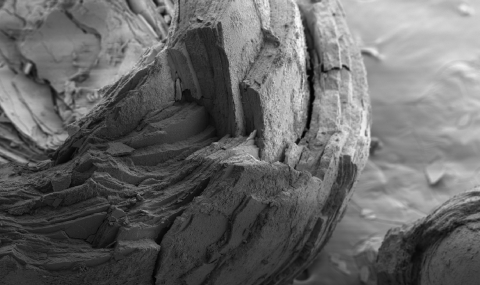The conditions in Earth's ancient surface environments are not directly observable, and we study them by proxy, through measurement and interpretation of the chemical and isotopic composition of sedimentary rocks. To extract robust information from these archives, we must understand the suite of processes that modify primary geochemical and isotopic signals to yield those ultimately preserved in the rock record.
In modern depositional environments, we can observe diagenetic processes in action, and from this we learn the ways in which they modulate the signals of interest. For example, in a number of recent and ongoing studies, we quantified the controls on the sulfur isotope composition of sedimentary pyrite, a common iron-sulfide mineral and a major component of the sulfur cycle. We found that the sulfur isotope composition of pyrite is controlled predominantly by local parameters of the sedimentary environment, like the deposition rate, the organic carbon concentration and reactivity, the availability of reactive iron, and the concentration of bottom-water oxygen and sulfate.
These findings challenge the common use of pyrite sulfur isotopes as a probe into the global sulfur cycle, but they offer new paths forward for constraining sedimentary paleoenvironments and the micro-environmental conditions experienced by sulfur-cycling microbes in past and present ecosystems.

Local depositional controls on the concentrations and isotopic compositions of porewater sulfate and sulfide, and through these, the isotopic composition of sedimentary pyrite.
Examples:


